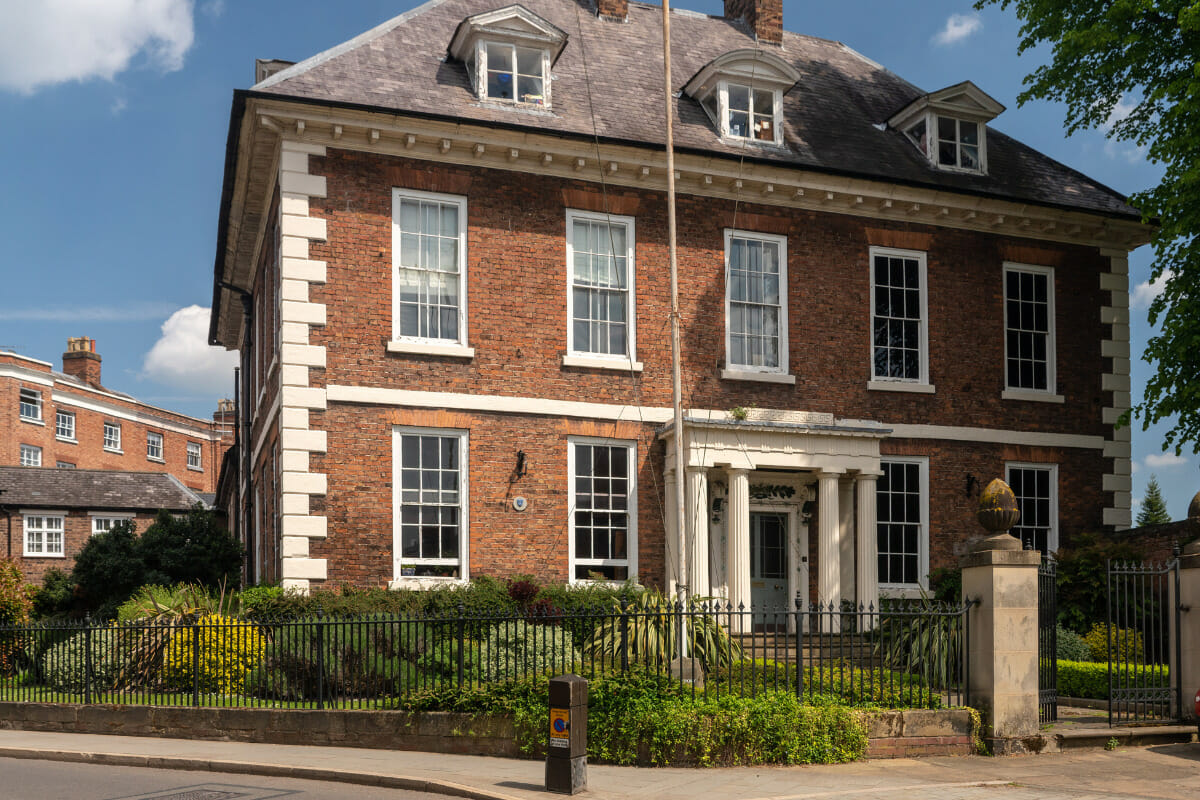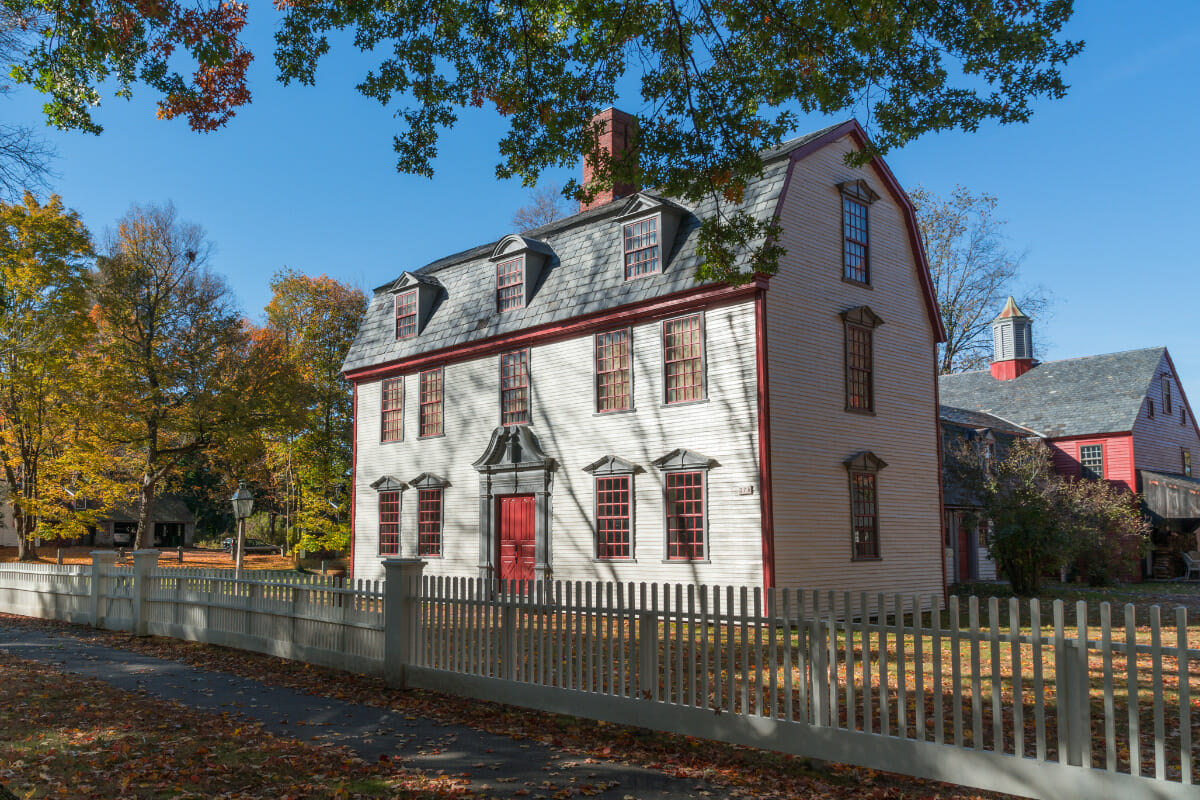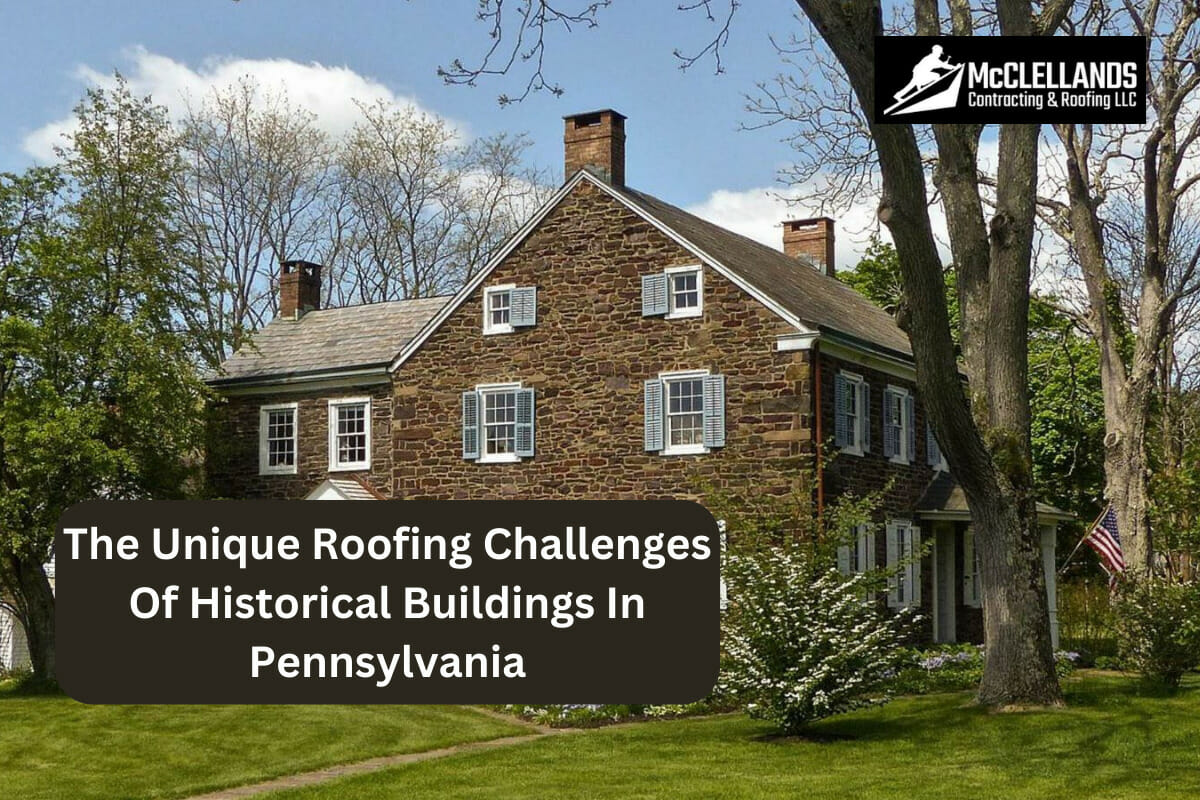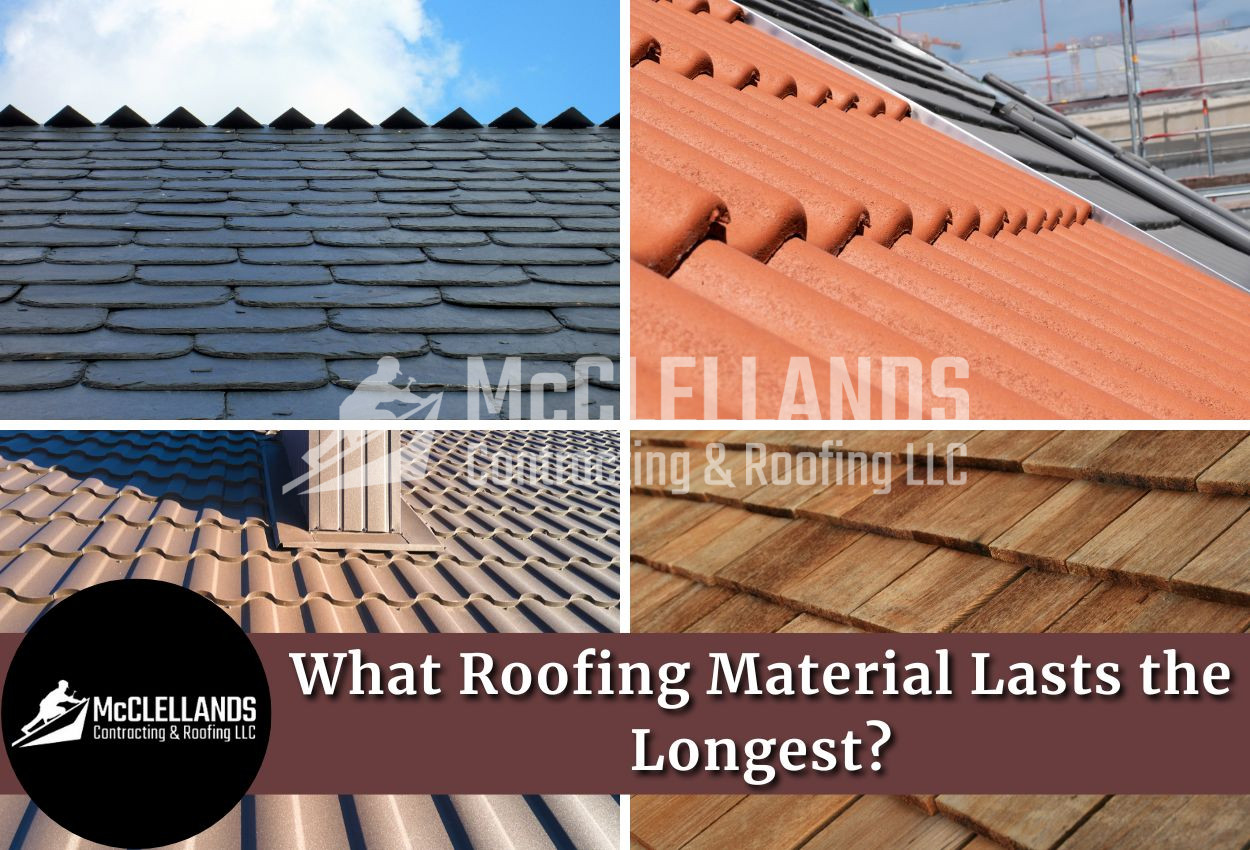The beautiful state of Pennsylvania is home to a wealth of historic buildings, each one with its own unique story to tell. From colonial-era homes to grand Victorian mansions, these structures have stood the test of time and witnessed generations of change. But with age comes a host of challenges, particularly when it comes to roofing. The roofs of historical buildings in Pennsylvania pose unique challenges that require specialized knowledge, techniques, and materials to maintain and repair.
In this blog post, we'll explore the unique roofing challenges faced by historic buildings in Pennsylvania. So, let’s get started.
What Is A Historical Building?
A historical building is a structure that has significant cultural, architectural, or historic value due to its age, design, or association with notable events or people. Historical buildings can range from small residential homes to grand public buildings and monuments, and they can be found in urban and rural areas alike.
These buildings often serve as important landmarks and symbols of a community's identity, and their preservation is important for future generations to understand and appreciate the past.

Types Of Historical Buildings
Here are some of the roofing styles that originated in history and can still be seen in parts of Pennsylvania today:
Colonial Homes
These homes date back to the 1600s and 1700s and were often simple in design, with steeply pitched roofs, symmetrical facades, and a central chimney. Some colonial homes can still be found throughout the Northeastern United States, including Pennsylvania.

Georgian Homes
Georgian-style homes are a trademark historical style in the U.S. and came about in the 18th century. Georgian homes are still popular for their symmetry, and they typically feature a rectangular floor plan with a central entryway and evenly spaced windows on either side. The exterior of the home is often made of brick or stone and may feature a pedimented or hipped roof
Victorian Homes
Popular during the mid-to-late 1800s, Victorian homes are known for their ornate, decorative features and often have multiple stories, bay windows, and intricate trim work. You can find them all across the U.S., but more commonly on the western coast.
What Are The Challenges With Historical Roofing?
Historical buildings present unique roofing challenges due to a variety of factors, including the age of the building, the materials used in the original construction, and the need to preserve the building's historical and architectural integrity. Here are some of the main challenges faced when working on the roofs of historical buildings:
Different Roofing Materials Used In Historical Buildings
The biggest challenge you’ll face if you own a historical building is the installation of new roofing material. The roofing industry is very dynamic, and it has seen some tremendous changes over the years. More and more companies now spend a lot of money on the research and development of new roofing products to make your home better.
On the other hand, most historical buildings were constructed using materials that are either no longer in use today, or their usage has been drastically reduced. So that means there is a chance that you might not be able to find the original material that was used for your historical home’s roof.
For example, slate was a popular roofing material on many historical homes for centuries because of its durability and longevity. However, the production and installation of slate roofs require specialized skills and knowledge that are not widely available today.
Similarly, wooden shingles were a common roofing material in the past but have since gone through a lot of changes. They have also been largely replaced by more modern materials such as asphalt shingles or metal roofing.
Finding A Contractor Can Be Tough
Historical roofing is a hard job that requires a high level of experience and a professional approach. Roofing a historical building requires a deep understanding of the building's unique design and construction methods. Though most roofers perform regular residential and commercial roofing services, only a few deal with historical homes. Due to several issues, finding the right roofing contractor for your historical home can be difficult.
You’ll have to do more research to find contractors with the required skills to perform historical roofing services, such as hand-cutting slate or installing clay tiles in a specific pattern.
How Do You Take Care Of Your Historical Roof?
Despite being present for hundreds of years, historical roofs still hold a lot of significance, and you should try to ensure that your historical home will look good for years to come. Here are a few things you can do to make your home adaptable to changing times.
Choosing Appropriate Roofing Materials And Techniques
When repairing or replacing the roof of a historical building, it's important to choose materials and techniques that are consistent with the building's original design and construction.
While it's ideal to use the same materials as the original roof when repairing or replacing it, finding an exact match can be challenging or even impossible in some cases. This is particularly true for buildings that are very old or have unique or rare roofing materials.
This is where the use of alternative roofing materials can help you, but you'll have to choose between two options:
Choose A Variant Of The Current Roofing Material:
If you can determine the type of material that was used on your roof you can choose to replace it with the same material. Just ensure you hire a contractor who knows how to handle the material if it is no longer used in roofing.
Chose A Modern Roofing Material
You can also opt for installing a modern roofing material such as asphalt shingles or metal. However, there is a chance that a newer material can reduce the value of your property, but it’s worth it if you want to preserve your home and its structural integrity.
Here are some of the popular roofing materials you can choose for your roof:
Clay Tiles:
Clay tiles are a popular roofing material for historical buildings. They have been commonly used in Mediterranean and Spanish-style architecture and provide a unique and distinctive look to a building's exterior. Clay tiles are durable, long-lasting, and can be customized in a variety of shapes and sizes to match the building's original design. Now more advanced and resistant tiles, such as concrete tiles, are also available.
Wood Shingles:
Wood shakes and shingles are traditional roofing materials that have been used on historical buildings since the 19th century. They offer a natural and rustic appearance and can be treated to resist decay and weathering. Back in the day, wood shingles made from pine and oakwood were common, but these were soon replaced by cedar wood, a durable and long-lasting material with natural weather-resistant properties.
However, all wood shingles require regular maintenance and may not be as durable as other roofing materials.
Alternative:
If your historical roof originally has wood shingles installed, then it is not likely to be in good condition by the time you’re looking to restore it. If you’re looking for an alternative, you can consider engineered wood shingles, as they come with the look of real wood, but without the necessary level of maintenance.
Metal:
Metal roofing is a popular option for historical buildings due to its durability, weather resistance, and ease of maintenance. Metal roofs can be customized in various styles and colors, and they offer a modern and updated look to a historical building. Metal has always been a common roofing material, like the use of tin in the late 18th century. This means that for some historical homes, using a metal roofing option will be a simpler transition to restore the roof.
Regular Maintenance And Inspections To Prevent Problems
Be it a traditional roof built in the 1900s or a more modern system, inspection is crucial for roof maintenance regardless of the roof’s style. It is one of the most effective ways to address roofing issues in historical buildings and to prevent them from occurring in the first place, or from getting worse.
Regular maintenance and inspections help identify potential roofing problems before they become major issues, allowing for timely repairs and replacements that are less costly and less disruptive to the building's historical features.
Partner With An Experienced Historical Building Contractor
When restoring the roof of a historical building, it's important to work with a contractor who has experience in historic preservation and restoration. These contractors will have the expertise and knowledge needed to work with unique materials and construction techniques.
Hire Us To Handle Your Historical Home’s Roofing System
Overall, the key to roofing historical buildings in Pennsylvania is to take a careful and thoughtful approach that balances the need for functionality with the importance of historical and architectural preservation. If you are looking for an experienced contractor that is capable enough to take on your historical roof replacement project, look no further than the McClellands Contracting and Roofing, LLC team.
Our team has replaced and restored a lot of properties, whether it is a historical property, church, or a contemporary roof, we have experience doing it all. So, contact us at (412) 353-5660 to book a free roof inspection with one of our team members, and get started on your historical roof restoration project today!




